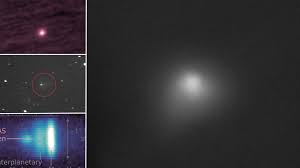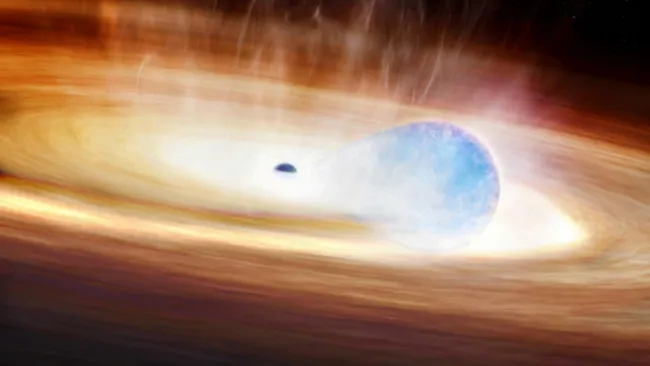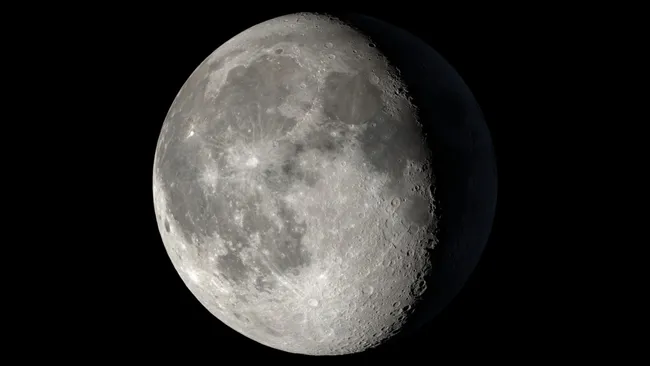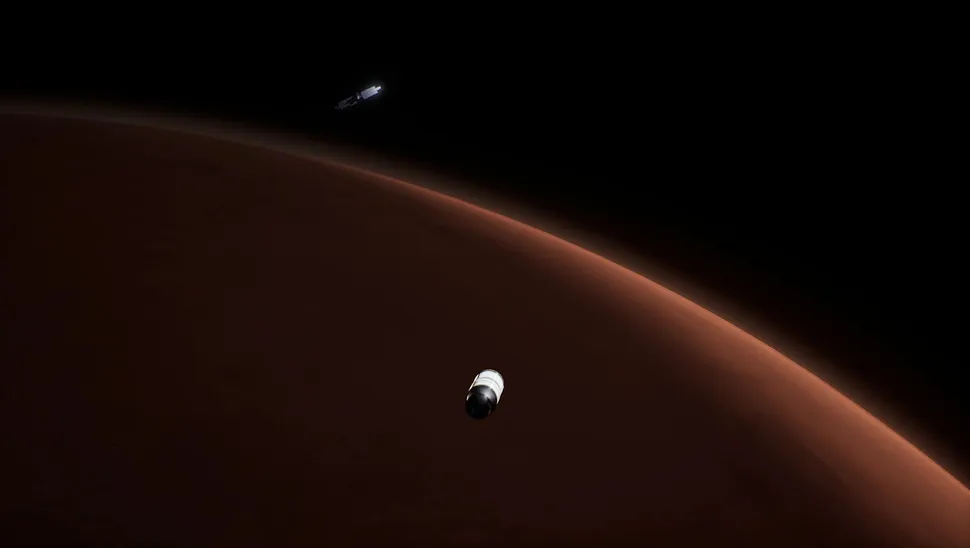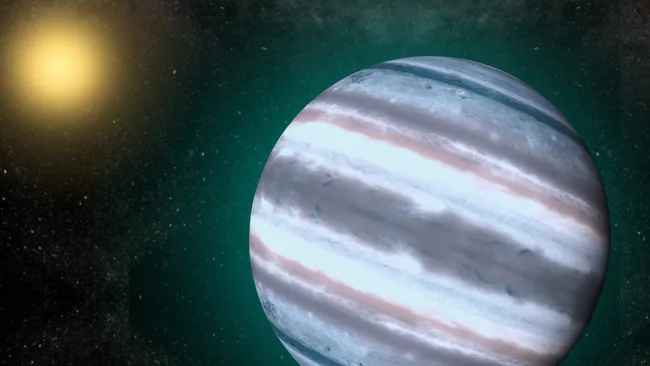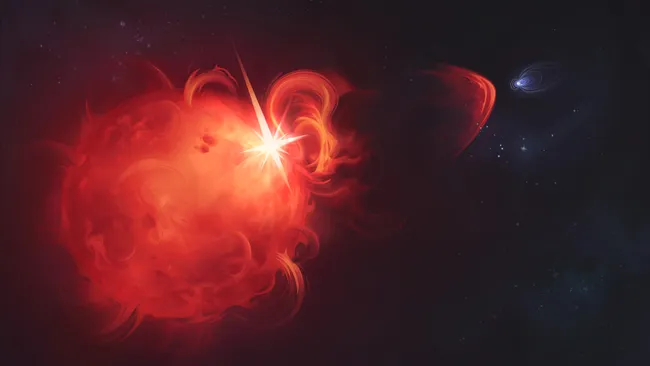Ever since the renowned “interstellar invader,” Interstellar Comet 3I/ATLAS, was detected in our Solar System earlier this year, scientists have been fascinated by its presence and the happy coincidence that brought it here — including experts at NASA. Consequently, the agency has been directing several of its spaceborne instruments toward this unique subject, which is only the third interstellar object on record to enter our corner of the cosmos.
Indeed, on Wednesday (Nov. 19), NASA released brand-new images of Interstellar Comet 3I/ATLAS gathered by quite a few spacecraft — including the James Webb Space Telescope (JWST), the Mars Reconnaissance Orbiter, the Perseverance Mars rover, and the Lucy asteroid-studying probe, among others. In total, an impressive 15 different NASA Space Missions are confirmed to be closely monitoring the interstellar visitor for new data.
“We’ve even pushed our scientific instruments beyond their normal capabilities, beyond the things that they were designed to achieve, to allow us to capture this amazing glimpse at this interstellar traveler,” Nicky Fox, associate administrator of NASA’s Science Mission Directorate, stated during a press briefing on Wednesday.
The new images, which will be detailed below, add to a growing collection of footage we possess of the object. For instance, we already have some remarkable stills, such such as this composite showing it ejecting a jet toward the sun, and this image capturing its expanding tail.
The Comet Identity Confirmed
First and foremost, NASA officials confirmed that Interstellar Comet 3I/ATLAS is, definitively, a comet. This dispels numerous internet rumors suggesting it might be an alien spaceship.
“It looks and behaves like a comet, and all evidence points to it being a comet. But this one came from outside the Solar System, which makes it fascinating, exciting, and scientifically very important,” NASA Associate Administrator Amit Kshatriya commented during the press briefing.
Fox added, “You kind of know the signatures that you’re looking for; we were quick to be able to say, ‘Yep, it definitely behaves like a comet.’ We certainly haven’t seen any technosignatures or anything from it that would lead us to believe it was anything other than a comet.”
But Interstellar Comet 3I/ATLAS does not need to be an alien spaceship to be unique — it remains an ancient, extraterrestrial comet.
“It’s a rare opportunity to compare ancient dust from a distant Solar System to that from our own,” Shawn Domagal-Goldman, acting director of NASA’s Astrophysics Division, noted during the briefing.
New Interstellar Data and Composition
The first image NASA Space Missions highlighted during the briefing was captured by the closest spacecraft the agency had to the comet: the Mars Reconnaissance Orbiter (MRO). MRO utilized its HiRISE camera to photograph Interstellar Comet 3I/ATLAS on Oct. 2 while the object was approximately 19 million miles (31 million kilometers) away.
“You can see the Interstellar Comet 3I/ATLAS looks like a fuzzy white ball,” Kshatriya described. “That ball is a cloud of dust and ice called the coma, which is shed by the comet as it continues its trajectory towards the sun.”
Next, analysis of data from the highly popular and powerful James Webb Space Telescope (JWST), combined with information from the SPHEREx space telescope, has revealed more than just visual imagery. This is because JWST and SPHEREx specialize in scanning the cosmos in infrared light, which is invisible to the human eye but rich in compositional and thermal data.
“We detected an abundance of Carbon Dioxide Gas in the comet’s coma and in the bright cloud of gas and dust surrounding that comet as it approaches the sun,” Domagal-Goldman revealed.
The infrared data also indicated the presence of water ice alongside Carbon Dioxide Gas in the comet’s nucleus.
“It does the same thing comets do — it evaporates carbon dioxide gas; it evaporates water,” Tom Statler, NASA lead scientist for solar system small bodies, said during the briefing. “But it’s evaporating more carbon dioxide compared to water — so that’s a very interesting thing.”
One fact is certain: It is extremely fortunate that we have so much imagery and data of Interstellar Comet 3I/ATLAS due to the immense rarity of its passage through our Solar System. Understanding the dynamics and composition of such distant cosmic objects can aid us in decoding the environments around other stars. What materials exist there? What conditions might give rise to comets like Interstellar Comet 3I/ATLAS? Already, we are discovering that 3I/ATLAS is quite special.
“It’s going to look different because it didn’t come from our Solar System, and that’s what makes it so magical,” Fox commented.
On the subject of the JWST, this instrument will likely be the last of our spacecraft fleet to observe Interstellar Comet 3I/ATLAS as the object exits our vicinity. This is because the JWST is constructed to peer deeper into the universe than ever before, enabling it to detect a signal even after other probes lose track of the target.
Compositional Anomalies and Multi-Angle Observation
Interstellar Comet 3I/ATLAS has previously exhibited a few compositional surprises in this regard, such as its strikingly rapid brightening during its closest approach to the sun on Oct. 29. There also appeared to be a glowing nickel vapor in the gas surrounding 3I/ATLAS while the comet was still significantly farther from the sun. This was unusual because, at that distance from our star, “vapor” is unlikely to be shed from an object due to the expected cold temperatures.
Statler mentioned during the briefing that although we know comets emit nickel and iron, 3I/ATLAS is emitting more nickel than iron, for reasons currently unknown: “That’s really interesting, really remarkable, and something to be studied in the future.”
During the briefing, it became clear why it is crucial to have so many different NASA Space Missions capture images and data of Interstellar Comet 3I/ATLAS. Not only is it beneficial to integrate data from various instruments, as seen with SPHEREx and the JWST, but it is fundamentally about the observation angles when imaging something as dynamic as an object traveling through the vastness of space.
“Comet 3I/ATLAS has arrived on a trajectory in the opposite direction and reached its closest point to the sun when Earth was on the wrong side for us to conveniently observe,” Statler explained. “But Mars was on the correct side of the sun, and our Mars assets were able to observe the comet, and several of our other spacecraft were also on the correct side of the sun.”
Spacecraft Tag-Team Observation
NASA’s Psyche asteroid mission, currently en route to the metal-rich space rock 16 Psyche, acquired four broadband images of the comet over eight hours on Sept. 8 and Sept. 9 while the comet was approximately 33 million miles (53 million km) from the spacecraft.
The subsequent week, the Lucy spacecraft, on its way to study the Trojan asteroids of Jupiter, observed the comet from the opposite direction, while about 40 million miles (64 million km) away. It successfully captured the comet’s coma, the halo of gas, and even its tail.
“You do not get these views unless you have spacecraft farther from the sun than the comet is so that you can see it backlit. We could not get this view from the vantage point of the Earth,” Statler pointed out.
Mars spacecraft also had an opportunity to view Interstellar Comet 3I/ATLAS as the object passed within 20 million miles (32 million km) of the Red Planet at the beginning of October. This is when MRO observed it, and it appears that NASA’s MAVEN (Mars Atmosphere and Volatile Evolution) orbiter did as well.
The observations do not conclude there. The European Space Agency (ESA) and NASA Space Missions operate the Solar and Heliospheric Observatory (SOHO), which imaged 3I/ATLAS from Oct. 15 to Oct. 16 after it had passed Mars, from about 222 million miles (357 million km) away. NASA’s Parker Solar Probe also managed a glimpse — an observation that scientists are eager to analyze.
“NASA assets that are gathering observations of 3I/ATLAS include Hubble, the James Webb Space Telescope, TESS, Swift, SPHEREx, Perseverance Mars rover, Mars Reconnaissance Orbiter, Maven, Europa Clipper, Lucy, Psyche, my personal favorite Parker Solar Probe, PUNCH, STEREO, and NASA’s SOHO mission,” Fox summarized.
“The answers will arrive later. We are still at this stage, very much in the process where we are figuring out what are even the right questions to ask about interstellar objects,” Statler concluded.
For instance, scientists are still zeroing in on the comet’s previous and predicted path. Europe’s ExoMars Trace Gas Orbiter spacecraft orbiting the Red Planet observed 3I/ATLAS between Oct. 1 and Oct. 7. Thanks to this, scientists managed to extract a highly accurate prediction of the comet’s trajectory. They suggest this knowledge could enhance our planetary defense capabilities, allowing us to refine strategies to protect Earth someday from an incoming space object.
There remains much more to be uncovered about Interstellar Comet 3I/ATLAS — for example, scientists cannot even yet confirm its size. The current estimated range is between a couple of thousand feet to a couple of miles in diameter, and the fact that it is so obscured by dust makes resolving the object’s shape difficult. Perhaps the most intriguing aspect, however, concerns its birthplace.
“It would be fabulous if we could trace back the incoming trajectory into the Solar System and trace that back and figure out where it came from,” Statler said. “But things are not quite so simple.”
As Stalter explained, the sun and all the other stars in our galaxy are in orbit around the center of the galaxy, meaning we can reasonably assume 3I/ATLAS has been in interstellar space for an extremely long time.
“We can’t state this definitively, but the likelihood is it came from a Solar System older than our own Solar System itself, which gives me goosebumps to think about,” he stated.

